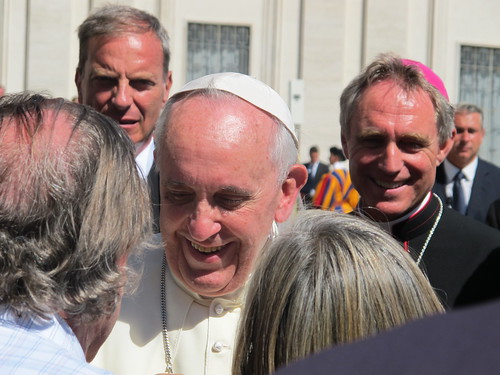27th September 2013
Being Connected: The Holy See and Communications

I suspect that until quite recently, not many people would have mentioned the Vatican in the same breath as the giants of global communications. Innovators like the BBC, global news operations like CNN, or social media like Facebook or Twitter. The Holy See speaks to us about tradition, the faith, the power of the pulpit. Yet when it comes to modern communications, it is somewhere in the slow lane: opaque, secretive, old fashioned. Right? Well, I wonder.
At the heart of its mission is the propagation of the Gospel – literally, the “Good News”. If it can’t do that in our global village, it can’t do it at all. So it needs the tools of the trade: ability to communicate in multiple languages, networks for outreach, and a clear brand. And, historically, it has also been ready to adapt to the technical means at its disposal. The Vatican newspaper, L’Osservatore Romano, was founded in 1861. Pope Pius XII launched Vatican Radio with Guglielmo Marconi in 1931 (a year before the BBC World Service). Vatican television, CTV, got off the ground belatedly in 1983. The first Papal tweet was sent into the ether at the end of 2012.
Above all, though, communicating requires an attitude, a cultural openness. Pope Francis told a recent conference of Catholic communicators at the Vatican that: “it is important to know how to dialogue and, with discernment, to use modern technologies and social networks .. to reveal a presence that listens, converses and encourages”. I expect that one of the big issues up for discussion over the next few months as the Pope looks at reforms in the Curia will be what the Holy See needs to do to improve its communications.
That debate won’t be starting from scratch. Gradually, as well as the tools and technologies, it is beginning to get the right people together. Archbishop Celli at the Pontifical Council for Social Communications has been presiding in recent years over what has been called “a kind of explosion in Vatican media”. Father Spadaro, the Jesuit editor of Civilta Cattolica (and author of the blog Cyber Teologia), who brought the recent interview with the Pope to impact on the world through a range of different media is telling today a conference in Italy about the importance not just of having a presence, but being connected. The new Director of CTV, Monsignor Dario Viganò, has spoken recently of transmitting Papal images in Ultra HD. Only last year, the Holy See poached a Fox News journalist, Greg Burke, to look at its communications strategy.
Some people have expressed surprise at the positive media response to Pope Francis, comparing it with the difficulties faced by Pope Benedict. To a certain extent, there is always the factor of the shock of the new. Some commentators have rightly said that Pope Francis is being praised for saying some things for which Pope Benedict would have been criticised. What they misunderstand, though, is that this is not just a question of style. In the modern world, how, when and where you say something – delivery, timing and context – is essential to getting your message across. That’s why this embassy does its best with limited resources to engage wherever the audience for our messages lies. And it is also, it seems, something that the Holy See, the world’s most “traditional” institution, is beginning to embrace.
In these days of mass miscommunication by “innovators like the BBC,” and “global news operations like CNN” we remain ever thankful for the Vatican’s media services most especially at this time with regard to the news and information they supply regarding the suffering of Christians in Syria and the calamity that has befallen them at the hands of western backed sectarian extremist opposition rebels.